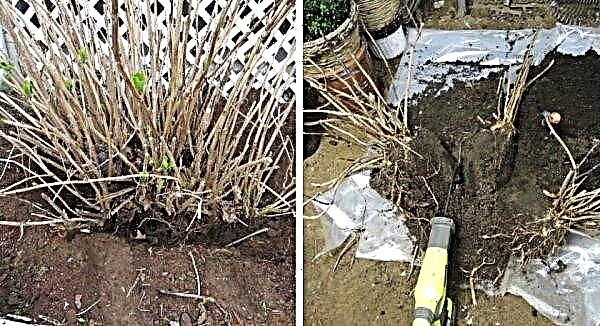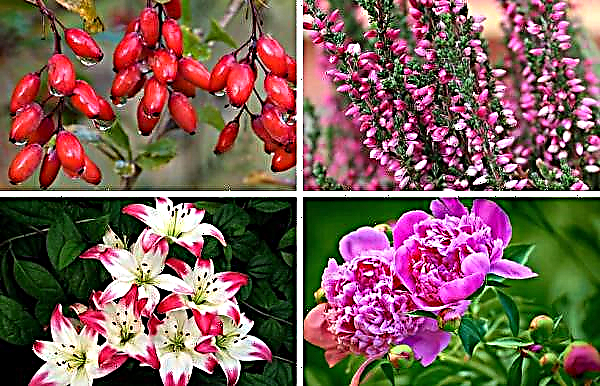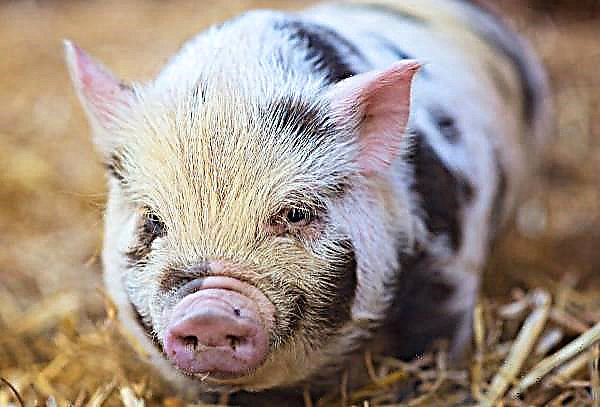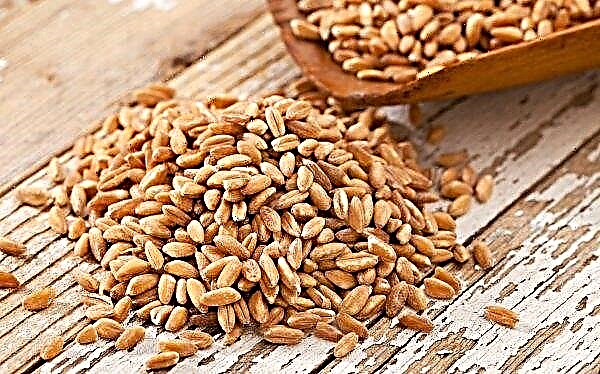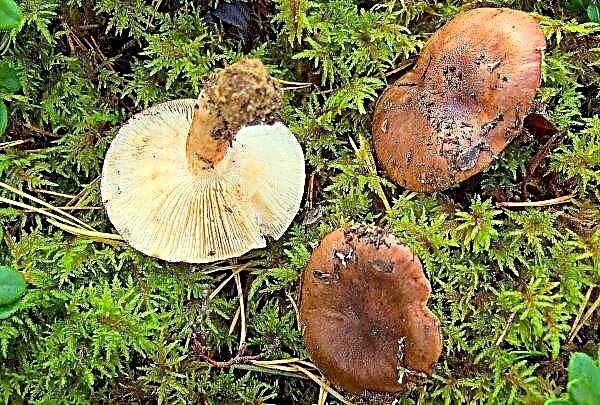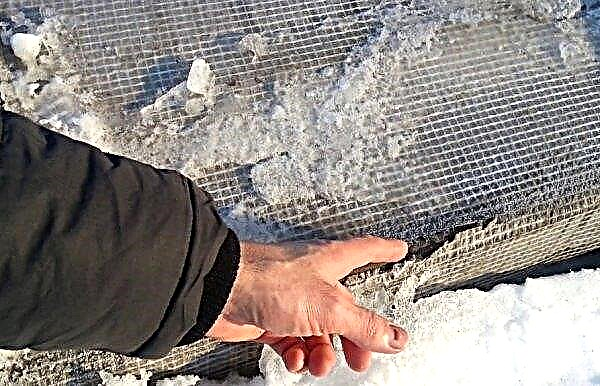Not all varieties of hydrangea are able to grow in the climatic conditions of Russia. Variety Vims Red refers to those cultures that adapt to any weather. Due to this feature, many gardeners plant this species in their plots to make them brighter. This article will discuss the main characteristics of this variety, as well as the rules for planting and care.
Grade description
Variety Description:
- the height of adult bushes is 1.5–2 m;
- shoots of burgundy shade;
- spherical crown;
- the leaves are dense, ovoid, dark green. Streaks are visible on the surface;
- inflorescences of a pyramidal shape. Their diameter is 20–35 cm;
- the width of the flowers is about 1.5 cm;
- buds are able to change their shade. At first they are white. Over time, they acquire a pink hue, and after that they become completely saturated red.
Landscape design application
Panicle hydrangea of the Vims Red variety is often used in landscape design, because it can decorate any garden. It can be planted both in solitary form and in group plantings. Thanks to the abundant and bright buds, this variety will make the garden plot attractive and unusual. Despite the fact that this species goes well with many plants, these flowers are often planted next to coniferous crops. The green shade of the needles perfectly sets off the burgundy buds.
Did you know? Some believe that hydrangea got its name in honor of the Roman Princess Hortense.
Landing
Vimes Red panicle hydrangea variety is unpretentious to the care and planting features. If you choose the timing of planting and prepare the site, then no problems will arise.
Video: hydrangea wims red
The time for landing is chosen depending on the region. In the northern regions of the country, plants need to be planted in spring, so that they can take root in the soil before frost. This will significantly increase the life span of the bush. On average, they grow around 30–40 years. In temperate regions, they plant crops in the fall. This is due to the fact that after a winter cold shrubs develop more actively with the onset of spring.
Seat selection
Panicle hydrangea of the Vims Red variety belongs to hygrophilous plants. Therefore, planting should be carried out in well-moistened soils and in partial shade. If you often water the bushes, you can plant them in sunny areas. Bushes of the Vims Red variety should be protected from strong gusts of wind. Therefore, planting is recommended on the south side of the garden, next to barriers or buildings.
Growing soil
When choosing a seat, consider the features of the soil. Hydrangea prefers to grow on fertile nutrient lands with a neutral or high pH level (6.5–8). This species cannot be planted on soils that contain a lot of lime. If necessary, add limestone (3 kg per 1 m²) to normalize the acidity of the soil.
Important! The color of the buds depends on the acidity of the soil. The higher the pH, the brighter the shade of the inflorescences.
The preparation of the seat is started 3 weeks before planting. The site is dug up, humus is applied (20 kg per 1 m²), weeds and foreign objects (stones, glass, etc.) are removed. You can also add peat, turf soil or fallen leaves to saturate the soil with nutrients.

Landing process
Landing Algorithm:
- Dig holes for planting, measuring 40 × 50 cm. The distance between the pits should be at least 1 m.
- Pour 15 cm of fertile soil inside the hole (from the upper layers).
- In the central part of the hole, make a small hill on which the seedling is lowered.
- Fill the pit with nutritious soil and tamp.
- Leave the root neck 5 cm from the ground.
- Water each plant liberally with 15 liters of water.

Care
Panicle hydrangea of the Vims Red variety does not require complicated care. She has a strong immunity to diseases, therefore, only a few of them are affected. Also, this variety is resistant to frost, which greatly facilitates the process of care. Given all the features mentioned above, the gardener is required to provide regular watering and top dressing. Also, do not forget about loosening the soil and removing weeds. Trimming can be done if desired.
Important! It is necessary to irrigate hydrangea of the Vims Red variety with well-maintained water. Due to this, the optimum pH level in the soil is maintained.
Watering and loosening
The interval and abundance of watering depends on the weather that is kept on the street. With heavy rainfall, you can not water the plants at all, that is, there is a risk of provoking root rot. If the weather is hot for a long time, you need to pour 300 liters of water per 1 m². Watering interval no more than 7 days.
 Before watering, the topsoil is loosened to a depth of 6 cm. After this, you need to mulch the trunk circle in order to maintain the optimal microclimate of moisture in the root system.
Before watering, the topsoil is loosened to a depth of 6 cm. After this, you need to mulch the trunk circle in order to maintain the optimal microclimate of moisture in the root system.
Fertilizing and fertilizers
Top dressing is applied according to the following principle:
- potassium sulfate is used in late May (100 g per 1 plant);
- ammonium sulfate is used in mid-July (50 g per bush);
- shrubs are fertilized with superphosphate in August (30 g per 1 hydrangea).
Species Wims Red responds well to organics. To acidify the soil, use whey, which is carried out basal irrigation (3 l for each bush). Thanks to such dressings, the abundance of flowering increases and the green mass grows better.

Trimming and Shaping
Shrubs need to be cut annually. Young plants less than 3 years old do not need this procedure. 3-year-old shoots are cut to improve flowering and rejuvenate the shrub. Pruning should be done in March, when buds have not yet appeared on the plants. You can also remove shoots in the fall, after dropping leaves.
Some farmers try in September to remove dry and damaged branches of the disease, and in the spring to re-examine the bush. This is due to the fact that after a winter cold some shoots may be affected by frost or break under the weight of snow. The Wims Red variety does not need to form a crown. It will take only 1 time in 5 years to prune old shoots to rejuvenate the plant and give it strength for development.Did you know? Latin name «hydrangea» sounds like "Hydrangea", which means "vessel with water." This is due to the high demands on moisture.

Winter hardiness and whether you need shelter for the winter
Hydrangea Panicula Wim's Red has a high winter hardiness. Plants tolerate cooling to -30 ° C. Adult shrubs do not need to be sheltered for the winter, that is, they are able to withstand severe frosts. Young hydrangeas, up to 2 years old, are annually covered with spruce branches or fallen dry leaves, so that weakened plants do not die in extreme cold.
Breeding
Plants are often propagated in the following ways:
- by seeds;
- layering;
- cuttings.
 The first method is not suitable for panicle hydrangea Wims Red, i.e. the seeds of this variety do not germinate well. To get a seedling, it will take a large amount of time, more than 1 year. Therefore, gardeners resort to this method extremely rarely, that is, they want to receive planting material within a few months.
The first method is not suitable for panicle hydrangea Wims Red, i.e. the seeds of this variety do not germinate well. To get a seedling, it will take a large amount of time, more than 1 year. Therefore, gardeners resort to this method extremely rarely, that is, they want to receive planting material within a few months.
Cuttings
To carry out propagation by cuttings, it is necessary to prepare them in the summer.
The cuttings algorithm is as follows:
- In the lower part of the bush you need to cut a young annual shoot, the length of which is 15 cm. It must contain at least 3 internodes for proper development.
- Dip the branches in clean water for 3 days, changing it daily. If desired, you can add the growth stimulator "Kornevin" (2 tbsp. L. To 3 l. Of water).
- On the 4th day, cuttings are planted in small containers, which are filled with a mixture of garden soil and peat (in a ratio of 2: 1).
- Deepen branches need 2/3 of the entire length.
- Water the soil every day.
- In the spring, start landing at a permanent place.
- The advantages of this method of propagation include:
- fast receiving seedlings;
- preservation of varietal characteristics;
- earlier flowering plants.
- The disadvantages include:
- the risk of losing the cuttings;
- preparatory processes (procurement of equipment, containers, search for a place, etc.).
Layering
Hydrangea propagated by layering begins in mid-summer. The operation algorithm is as follows:
- The lower shoots on the bushes are tilted to the ground and fixed with a metal bracket.
- The part closer to the soil is incised and deepened by 3 cm.
- The end of the shoot should be vertical.
- By spring, the shoot will take root. This means that it is possible to separate from the mother plant and transplant separately into the open ground.
- Flowering will come the next year after planting.

- The advantages of this method are as follows:
- not complicated actions;
- development speed;
- preservation of varietal characteristics.
- The disadvantages include:
- labor and time costs;
- determination of the age of escape.
Diseases and pests
Panicle hydrangea of the Vims Red variety can be affected by powdery mildew, spotting and chlorosis. Against these diseases it is necessary to carry out monthly spraying with fungicides with an interval of 2 weeks. Against powdery mildew, the signs of which are the appearance of a white coating on the leaves and stems, Bordeaux is used (30 g per 10 liters of water). Copper sulfate (10 g per 10 l of water) is considered to be an effective remedy against spotting, which manifests itself in round purple spots on the shoots.
Symptoms of chlorosis (premature yellowing and falling of leaves, as well as drying of the tops of the branches) can be eliminated by treatment with Fitosporin (40 g per 5 l of water). Vims Red hydrangea bushes show signs of pests such as aphids and spider mites. Against all these parasites there is a universal remedy "Aktara" (50 g per 10 liters of water). Spray plants need 1 time per month.

So, now you know how to grow a beautiful and unusual variety of panicle hydrangea Wims Red at home. If you follow all the rules for planting and care, a culture of high decorativeness will bloom for a long time and publish a pleasant aroma. Thanks to its frost resistance and unpretentiousness, even beginner gardeners will be able to grow this variety.



